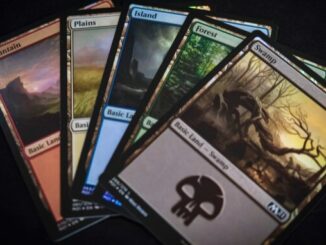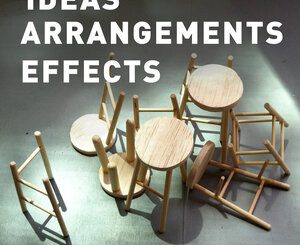
A framework for crafting learning experiences
Thi Nguyen’s book, ‘Games: Agency as Art’ is not about learning games or games-based learning specifically. But the viewpoint about all games that he advances has huge implications for games-based learning. It offers us a framework for learning games that focuses us on our tools and their potential, and opens up the scope of what we can do with, to and for players of learning games.
This isn’t a review of that book. Rather, I’ll explain his central argument in straightforward terms, and explain what I think it can offer games-based learning practitioners.
Games reverse the usual practice of choosing means to meet ends
Games are often seen as frivolous. Players are frittering away time; at best amusing or entertaining themselves. Even when people defend games against this criticism, it’s often by saying that games can serve some other, serious end. That ‘serious games’ can offer a social critique, or that games can be an engaging way to tell important stories.
But Nguyen argues that we don’t need to appeal to these higher goals, because games do something incredibly valuable in their own right: they get players to adopt particular ends and means. Bernard Suits defines games as a ‘voluntary attempt to overcome unnecessary obstacles’. When we take up this attempt, we take up the goals and rules of the game – the magic circle – as a temporary end.
Although some players, for some games, play to win or profit, many of us play largely for an experience. This inverts the normal way of things: in life, we tend to define our ends and live by means to suit. When we play games for the experience of playing, we temporarily take up the game’s ends, specifically to give ourselves the experience of the means we use to achieve them.
When the striving is the point, our agency takes centre stage
In this kind of gameplay, the particular quality of how we strive towards the game’s ends becomes central. We’re more likely to play games that offer experiences that we value. Often these are ones where we’re in control; where we have agency. Otherwise we may as well watch a movie or read a book.
That agency can take many forms, but we often get a special kick when our actions, decisions and solutions have a certain elegance. When we spring a well-planned trap in chess, or finally solve a vexing puzzle in a game like Myst or The Room. Most of all, when meeting the challenge is at the very edge of our capabilities.
These kinds of experiences not only exercise our agency, but develop it. By acting and seeing the consequences of our actions, we learn. By testing our capabilities, our agency grows. In everyday life, this usually happens in arbitrary, random ways: many things are too hard or too easy, or develop our agency in ways that are not particularly useful.

Game designers can sculpt the agency of players
When we play games for the playing, we use our agency in the way suggested by the game: by its goal, its rules and its environment or obstacles. In chess, we develop our capacity for agency in strategy, tactics and anticipation. When playing poker, we develop agency in calculating odds, bluffing and reading others’ intentions.
The goals, rules and obstacles – by dictating the kind of agency that we use and develop – become the tools the game designer uses to sculpt. And the clay is no less than our agency. A tweak here or there in any of these three areas can dramatically affect what agency we exercise, and how.
The goals and obstacles of life can offer similar opportunities. But game designers can sculpt in a more focused way. Where life confronts us with a dizzying confusion of conflicting values and options, games work by narrowing our focus, telling us what to care about and offering us possibilities for getting it. Where life can frustrate or bore us, games can set the level of challenge to bring out a motivating and enriching sense of flow.
Shaping new agencies for players is a powerful way to frame learning
Nguyen goes as far as to suggest that games are a technology to hold different agencies, the way books might store lessons on different topics. And just as a collection of books becomes a library, the range of games available to us is a library of possible agencies – by playing more and different ones, we can expand the range and depth of our agency.
All this, the book explores without specific reference to learning games, although Nguyen often frames this in terms of a benefit to humanity. But if learning is our focus, this way of looking at things holds extra power.
What is the agency you want your learners to exercise? Which games or experiences already exist that touch on that agency, and how might they inspire you? How can you extend more agency to your learners, so that they’re really acting out the skills and capacities you want them to take away and use beyond your game or experience?

Your tools are your goals, your rules and the obstacles you choose
And in terms of crafting the exact experience we want, we have three powerful tools: goals, rules and obstacles or environment. Thinking of these tools as settings that you can tweak, in design, in playtest and revision, can unlock creative flexibility to shape player agency.
What will you reward within the game, to make players care about it? What combination of rules will offer players the chance to generate ideas for, and then try out and develop, the kind of agency you want from them? What obstacles will inspire them to rise to the challenge?
We’ve always had these tools. But seeing them as sculptor’s tools, and specifically the agency of our players as our clay, unlocks our ability to focus on and work that clay. If our concern is learning, this helps us shape what really matters: the catalogue of agency our learners can access.
Games: Agency as Art is available on Amazon
- Using Games to Sculpt Agency - 22nd November 2022
- Gift Horse Download - 25th April 2022
- Dungeons & Dragons & Development - 21st April 2022





Be the first to comment